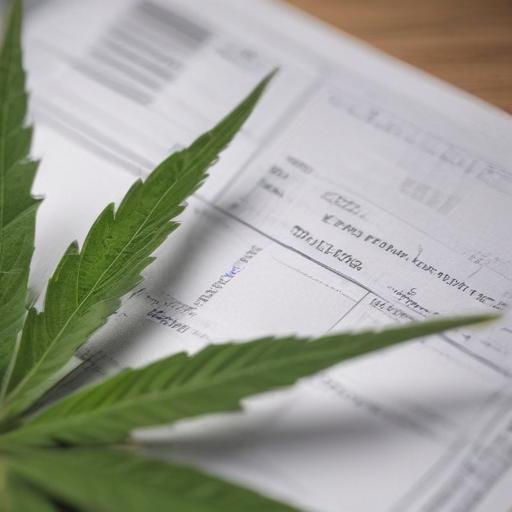President Donald Trump has indicated this week that his administration is weighing a federal reclassification of marijuana to a less dangerous category, with a decision expected in the coming weeks. Speaking at a news conference on August 11, he said the administration is “looking at reclassification and we’ll make a determination over the next few weeks.” The move would mark the most significant shift in federal marijuana policy since the drug was banned decades ago, but it would not by itself legalize recreational use nationwide.
What a Schedule I classification means
Under the current framework, marijuana is a Schedule I drug, defined as highly dangerous, highly addictive and without accepted medical use. If reclassified, marijuana would move to a lower schedule where drugs with medical use can be prescribed and dispensed by licensed providers and pharmacies. However, moving to a lower schedule would not automatically legalize recreational marijuana at the federal level; it would simply permit broader medical use and access under federal drug scheduling rules.
Indiana’s status and the marijuana landscape
Indiana remains clearly against any form of approval for marijuana use—neither recreational nor medical. The state allows certain cannabis derivatives, such as CBD and specific THC products, only when they stay under the 0.3% THC limit. Any product with higher levels is still illegal.
Across the United States, the policy landscape has shifted substantially. As of April 2025, 24 states plus the District of Columbia have legalized some form of cannabis for either medical or recreational purposes. The states that have moved forward include Alaska, Arizona, California, Colorado, Connecticut, Delaware, Illinois, Maine, Maryland, Massachusetts, Michigan, Minnesota, Missouri, Montana, Nevada, New Jersey, New Mexico, New York, Ohio, Oregon, Rhode Island, Vermont, Virginia and Washington, along with DC. In total, 46 states, along with DC and several U.S. territories, permit some medical use of cannabis.
Nearby states and contrasts with Indiana
For residents of Indiana, neighboring states offer different legal frameworks:
– Ohio and Illinois have legalized both medical and recreational cannabis.
– Michigan allows both medical and recreational use.
– Kentucky permits medical cannabis use in restricted forms.
Federal history and current gaps
Cannabis was federally banned in 1970 under the Controlled Substances Act, when it was classified as Schedule I. The shift in scheduling under any administration would require a formal rulemaking process, typically involving assessments by health authorities and the Drug Enforcement Administration. Even if marijuana is reclassified, that step alone would not restore broad federal legalization of recreational cannabis.
States with stricter prohibitions and decriminalization
Several states continue to prohibit marijuana for medical and recreational use, with varying enforcement approaches. Idaho, Kansas, South Carolina and Wyoming are cited as states where marijuana remains fully illegal beyond certain limited or decriminalized contexts. Other states have decriminalization or narrowly constrained medical programs rather than full legalization.
What a reclassification could mean in practice
If marijuana is moved to a less restrictive schedule:
– Medical access could expand for patients who might benefit from cannabis-derived therapies, subject to medical guidelines and physician oversight.
– Licensed providers and pharmacies could play a larger role in dispensing certain cannabis products.
– Research into medical uses could become more feasible, potentially accelerating clinical studies and evidence gathering.
– Banking, tax, and product safety frameworks might adapt to accommodate legal medical cannabis markets more robustly.
– Recreational use would still require separate federal action to be legalized nationwide; scheduling alone does not accomplish that.
What to watch next
– The timing of any reclassification decision and the process that would follow with federal agencies.
– How states, especially those near Indiana, respond to shifts in federal policy regarding medical access and research.
– How medical cannabis programs evolve in states that already allow broad use, and how that might prompt new guidelines or federal guidance.
Key takeaways
– The president signaled a potential federal reclassification of marijuana to a less restrictive schedule, with a decision expected soon.
– A reclassification would not legalize recreational marijuana nationally; it would affect medical access and regulatory handling.
– Indiana remains opposed to marijuana legalization, with limited legality tied to very specific, low-THC products.
– As of April 2025, 24 states plus DC have legalized some form of cannabis for medical or recreational use; many others maintain stricter or non-existent programs.
– Any scheduling change would involve a formal federal rulemaking process and would not automatically resolve broader federal legalization questions.
Additional context and commentary
This development arrives amid a shifting national conversation about drug policy, medical research, and criminal justice reform. Should the federal government adjust the scheduling of cannabis, it could help align medical access with evolving clinical evidence while still preserving regulatory safeguards. It may also influence states’ own regulatory frameworks, potentially prompting refinements to medical cannabis programs, product testing standards, and consumer protections. The next few weeks will reveal how far the administration is willing to go and how Congress and the states respond to any such move.
Note: This reform discussion remains fluid and contingent on administrative and legislative processes. If you’d like, I can add a concise FAQ section addressing common questions about scheduling, medical access, and how a potential decision could interact with Indiana’s current policies.
